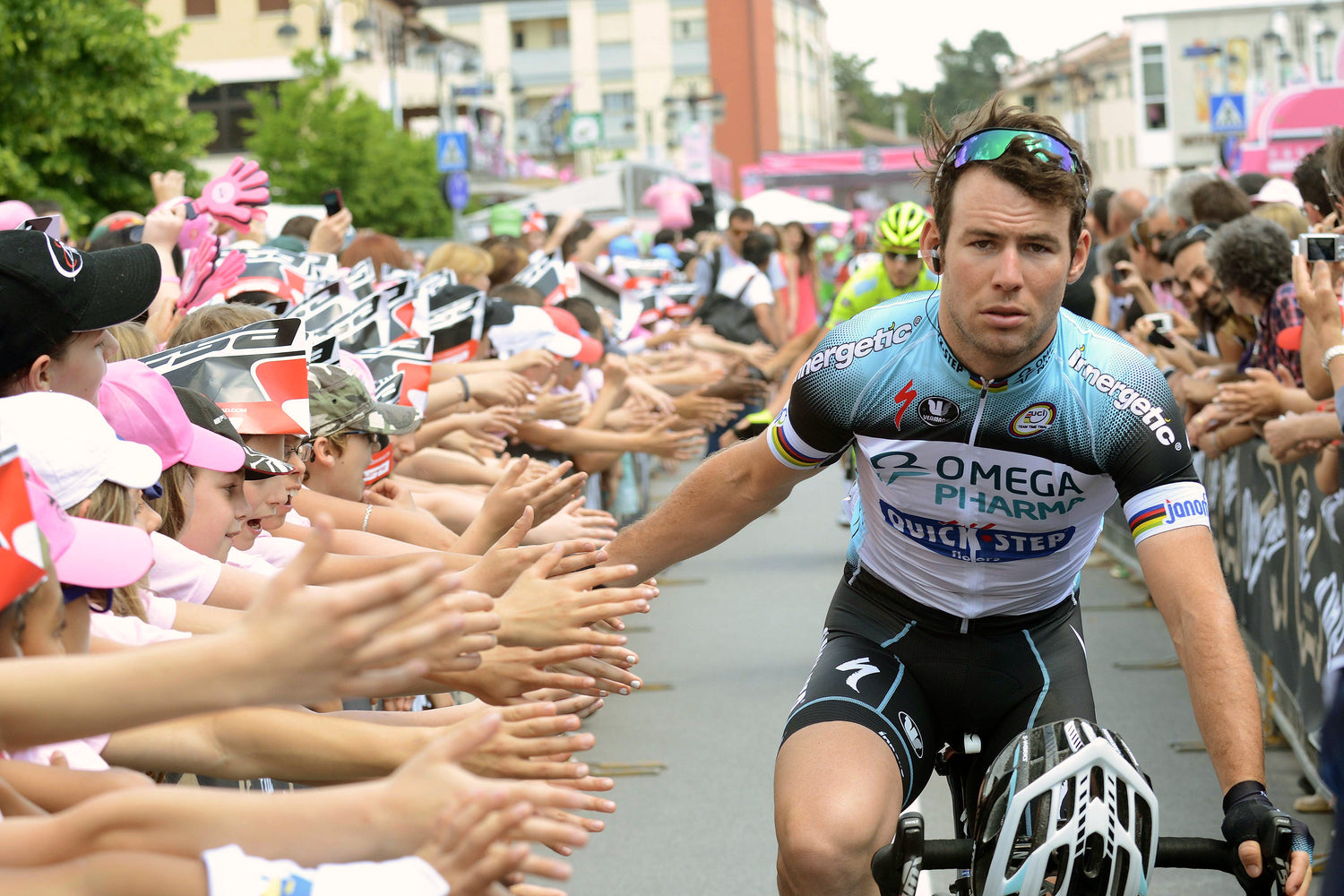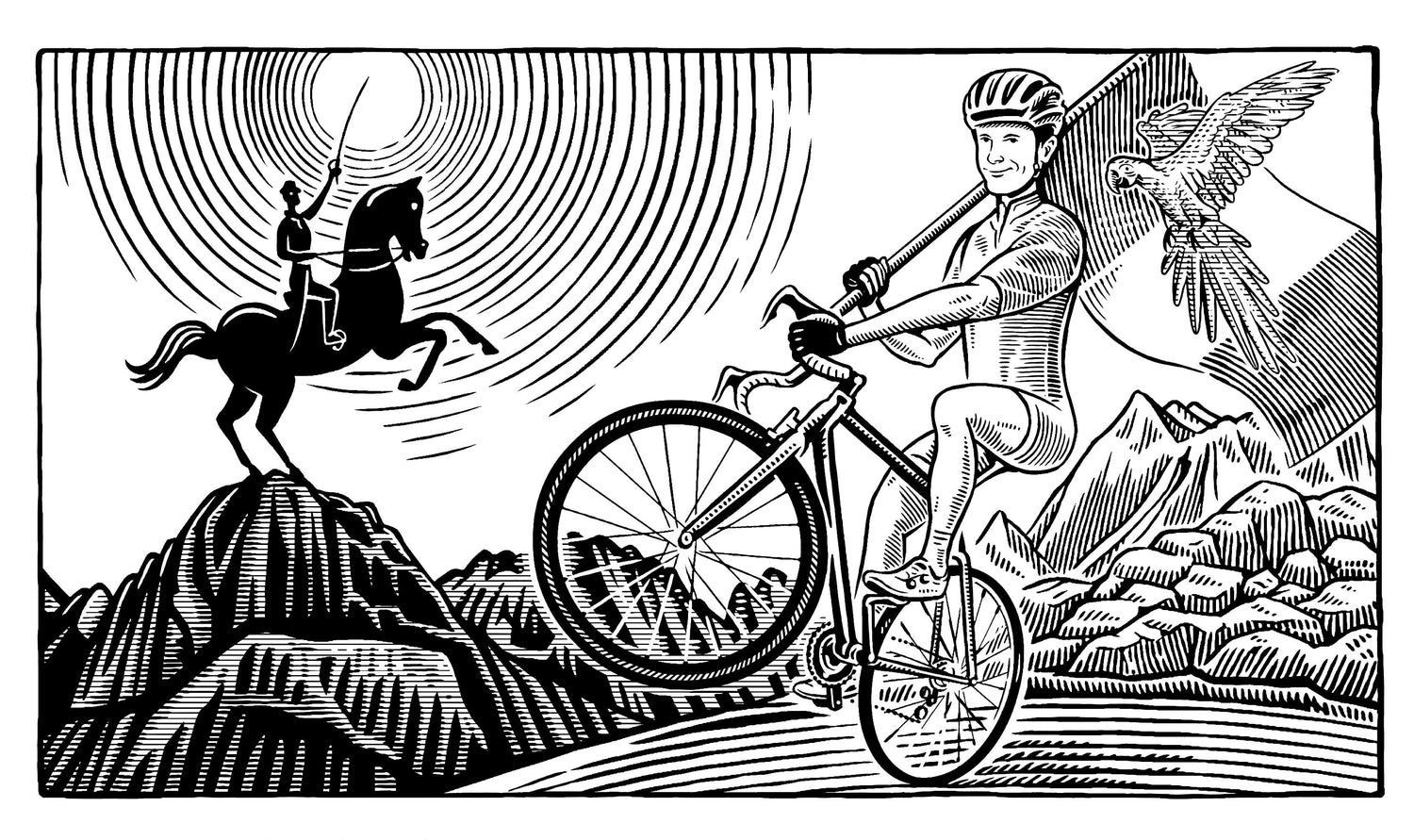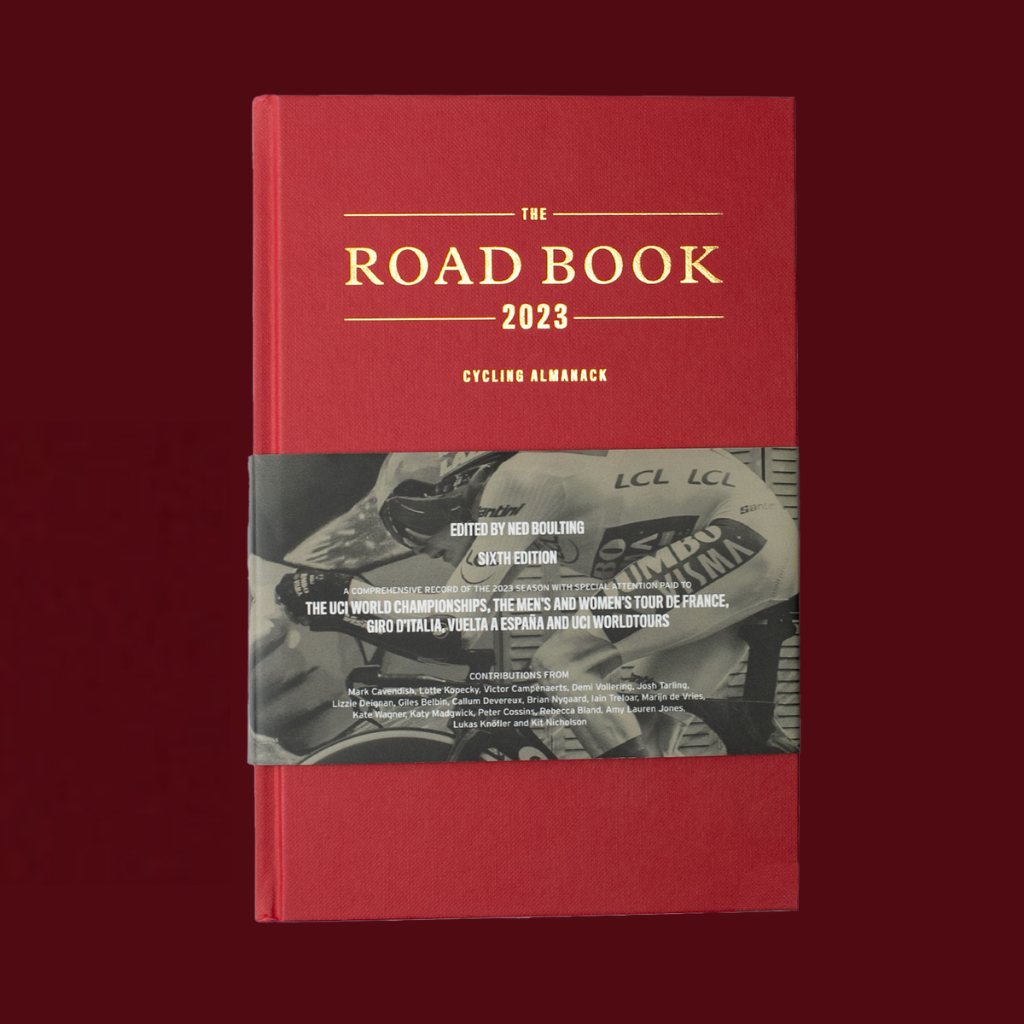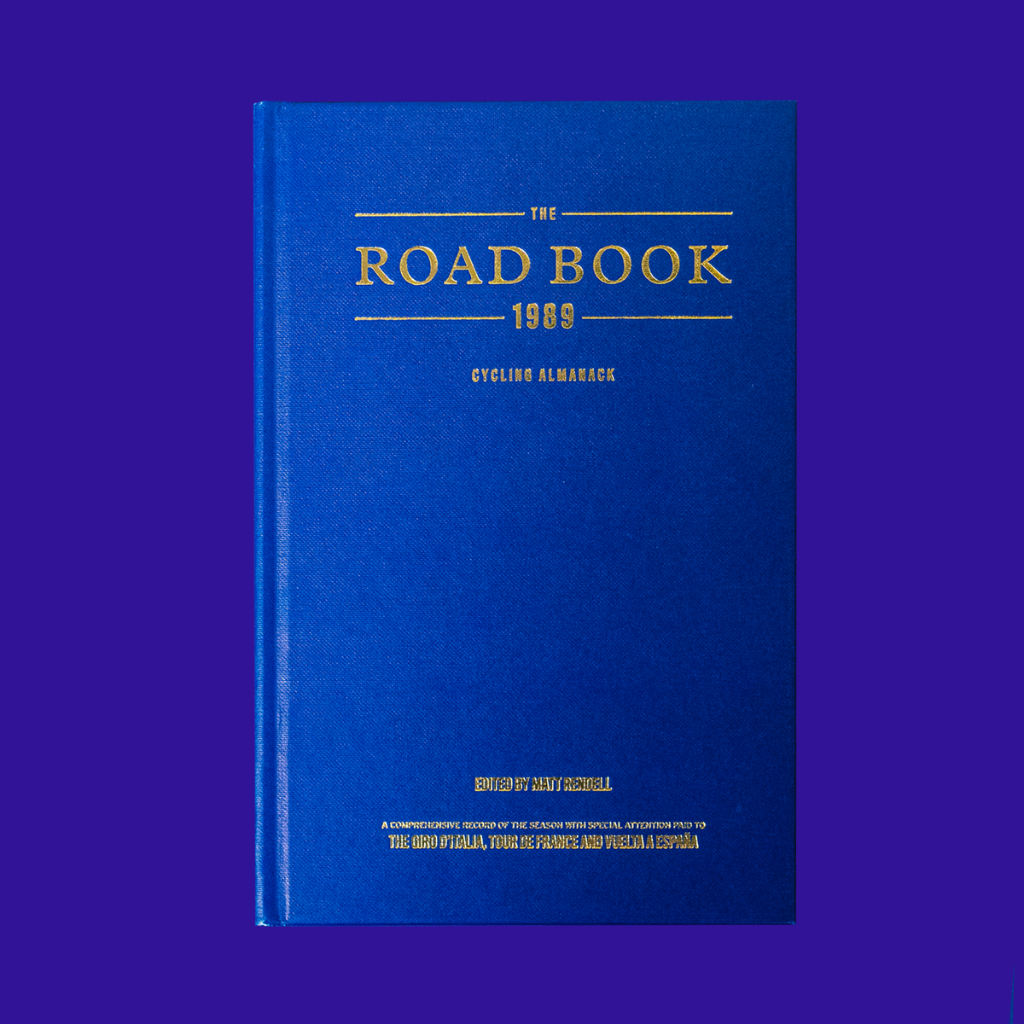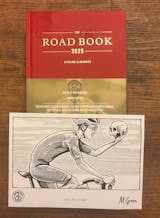On the morning of the final stage of the 2020 Tour de Langkawi, out for a very warm, very perspiration-laden run around the finishing circuit, I stopped dead in my tracks. Ahead of me was really very small monkey, with a bit of a beard. I don’t know what type, because I am not David Attenborough. But what I did know was that it was licking the inside of a burger box that had been discarded by the side of the road.
We beheld one another, me slightly warily, while it simply looked curious at the spectacle of a cycling journalist in an old AG2R La Mondiale T shirt that I’d been thrown from the publicity caravan during the Tour de France four years ago. Then, with a nod of the head that I considered to indicate mutual respect, the monkey sauntered off into the jungle, pausing only to turn around and collect its burger box, which it hauled into the green wilderness. And then it was gone. And I had missed my moment with this Lord of Life.
It was hardly D.H. Lawrence and The Snake (google it, unless you can remember the poem from your English lessons), but it was a portentous moment, and it capped off eight days of travelling around Borneo and peninsula Malaysia that will live long in my memory.
I have soaked up so many impressions, eaten so much rice, drank so deeply from the stream of human experience that I am full to bursting with this intense country and the complex interweave of different folk who that call it home. My impressions have been fleetingly short, since bike races refuse to stand still, but they’ve been rich. Now I, like the monkey, will take my 18 kilo burger box that contains my clothes and a few gifts picked up along the way, and I will check it into the hold of a jet that will fly me home to my urban jungle on the other side of the globe, where I will disappear into my natural landscape of grey.
This was the silver jubilee edition of the race, the 25th anniversary. Although it bears the name of the island of Langkawi, it is essentially the Tour of Malaysia, and can legitimately lay claim to being the “prestige” race of the Asian continent, regardless of the World Tour status accorded to the UAE and Guangxi Tours.

It came into existence in 1996 at the behest of the titan of Malaysian political life Mahathir bin Mohammed, the Prime Minister who, at 94 years of age is (unsurprisingly) the oldest serving head of state in the world. He has remained the Member of Parliament for Langkawi throughout a long, interrupted, premiership of this ethnically diverse land with its multi-faith communities and massive potential began in 1981. This is his second, not uncontroversial term of office.
But, without getting lost in the nuances of Malaysia’s politics, which I am singularly unqualified to do, suffice to say that his reappointment to the highest office at the election has reinvigorated the Tour de Langkawi. In other words, public funds have started to flow again, courtesy of the state-owned oil company Petronas (yes, this is cycling: you’re never more than a few metres from moral compromise). In fact, on this edition of the race, almost all of the three intermediate sprints on each stage of the route were strategically located outside Petronas petrol stations. And you thought they might be placed there for sporting reasons?
It is a well-run race, one of the safest in the calendar, popular with the European riders who make the trip. In fact, I didn’t see a single crash on the TV coverage – partly because I didn’t see much of anything relevant on the TV coverage, which will surely have to improve after a new production company with almost everything to learn about bike racing contrived to make a terrible mess of broadcasting the race.
Malaysia is not a cycling country. Very few people ride bikes, it seems to me. Yes, it’s hot, but that’s not really the reason, though lord knows what is. I know that if I lived here, I’d ride. I’d love the feeling of scooting along in the hot air, unencumbered ever by the need for any kind of outer layers or long sleeves. It’d be perfect.
And so it is that the crowds at the side of the road can look a bit sparse. They seem often to be restricted to those many people who happen to ply their trade at the hundreds of thousands of road-side shacks, stalls and open-air restaurants which serve up Malaysia’s famously fabulous street food. They watched the race flit by, as did the mandatory schoolkids, delighted to be let off school; the girls in their white or blue headscarves, waving wildly at a peloton of Italian and Kazakh pros with shaven, oiled legs. Odd business, cycling.
And I got the sense that no one, or at least very few people were actually following the race; by which I mean looking at the score – the GC. So unimportant was the small matter of who actually won the race, that the TV director didn’t show a single shot of the winner (Team Sapura’s Italian pro Danilo Celano) for about half an hour after he’d crossed the line, which again, we hadn’t seen. On at least one occasion, voicing the highlights packages that were cut by our host broadcasters, they simply failed to show the stage result, which seemed a notable omission.
Still, I was following it all, as closely as I could. And I was suitably beguiled by the teenage success of Taj Jones from the Sunshine Coast in Australia, by Yvgeny Fedorov of the brilliantly named Vino – Astana Motors team, and by the two stage victories by Malaysia’s marquee sprinter Harrif Saleh. But I have a feeling that not many other people either knew nor cared particularly about the nuts and bolts of the actual sporting competition.
That’s not to say that they weren’t watching on TV. RTM, the state broadcaster, claimed that 5 million had tuned in to see the penultimate stage. I’ve no reason not to believe them. This Tour seemingly acts as a point around which an expression of casual national pride can coalesce, like copper sulphate around a seed crystal. Each molecule is unaware of its purpose, but the entirety of the structure which emerges is impressive. And there is a subtle sense of scale and importance at the heart of this endeavour.
There are vanity races across the world, unlovely things whose purpose is naked sportswashing, or whose existence is entirely at the whim of a tycoon or overly influential local governor trying to flex the muscles in their legacy without going to the messy and permanent expense of having to build a stadium, a swimming pool or a running track. Road racing, for all its boggling logistical problems, still represents entry-level expenditure in global sporting terms, and its reach can be huge.
But this would be an unfair bracket in which to place the Tour de Langkawi; it is much more than the bauble of a powerful man. There is a soul here, in this boiling hot race that pits the best of Asian riders against a welter of not-quite-world-class Europeans.
There is heart in any race during which the riders have to walk the gangway to a local and crowded ferry, their team-issues rucksacks on their backs, in order to reach an island and resume racing. It is hard to say who enjoyed this water-born encounter more, the European racers or the intrigued local population going about their daily commute. Both, I think.
I don’t know if I’ll be back. Perhaps I will, but probably not. The monkey and I might well have the seen the last of each other. But if I don’t return again, every time that February comes around, I will take down the Times Atlas from the shelf, and pore over that fractured tropical archipelago on the far side of the Bay of Bengal, and I will wonder who’s in the king of the mountains jersey, and whether or not anyone cares. I do hope someone’s paying attention.
Ned Boulting




